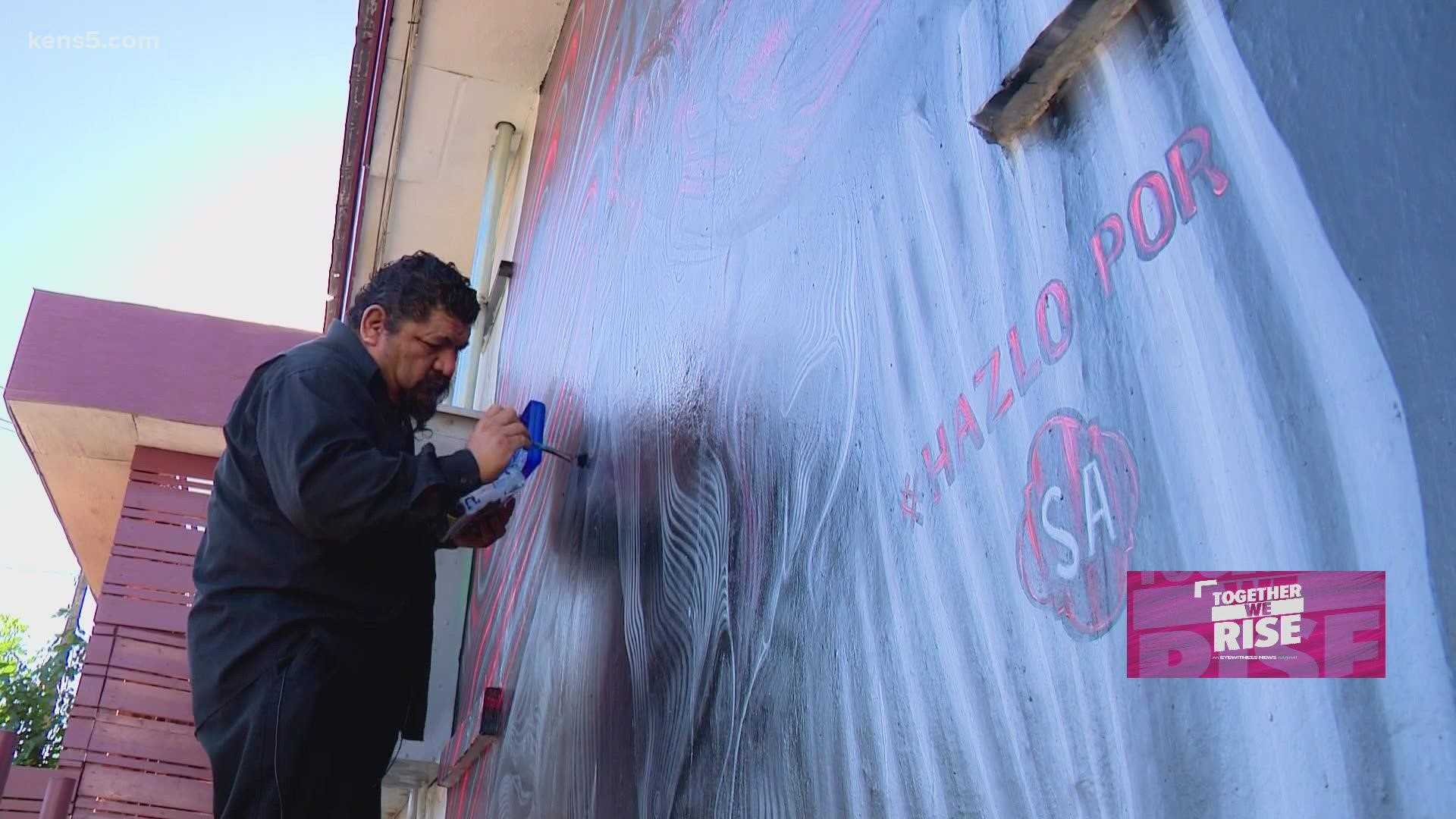SAN ANTONIO — Drive around the heart of San Antonio and you’ll find its buildings splashed with color—pictures depicting the city’s rich culture, music icons, pop culture, hometown sports teams or even memorials.
These pieces can turn your basic brick-and-mortar into a canvas for a story to be told.
“That’s what we work for is creating those kinds of memories for people with our work," said Alex Rubio, a contemporary Chicano artist.
For the last 35 years, the streets of San Antonio are where Rubio received his education in public art.
“I feel that art has changed my life. I feel that art has saved my life," he said.
"Growing with the murals and seeing how these murals impact community inspires me to keep up with current events, community politics and national politics."
Rubio’s most recent work, commissioned by San Antonio and its public health department, memorializes a well-known member of the south-side community while spreading a message of getting vaccinated against COVID-19.
“To me I feel like that’s a very important social and political issue, because there is a high percentage of Latinos who are not vaccinating," he said.
Rubio identifies as a contemporary Chicano artist, inspired by "El Movimento," or the Chicano Movement. He's devoted his career to spreading important messages in the Latino community.
“It’s a movement that was based back in time during social injustice. Just like the Black Lives Matter movement is today, well, the Chicano movement was that movement back in the '60s for Latino Americans and Chicano artists,” Rubio said.
At the same time, it's a mural movement.
“I think we as a community need this form of community activism," Rubio said. "I feel like they inspired me when I was growing up to actually join a nonprofit organization and help that movement and become part of solutions, awareness. These are all part of public art," Rubio said.
A form of outreach set to inspire everyday people where they live.
“Public art becomes a part of your life. You walk by it every day,” Rubio said. “It’s a west-side mural, it’s a south-side mural, east side and north side all have their iconic images. Those are pieces that become San Antonio icons, neighborhood icons. You protect them."
Protecting and sharing these icons is what Cuauhtli Reyna, El Placazo coordinator with San Anto Cultural Arts, works to accomplish with his city art walks. The nonprofit focuses on art through community engagement.
"Chicano muralism as a whole is kind of based on putting our voice in picture form, so that everybody can see it," Reyna said. "That’s where we cry out from our barrios and cry out from our communities as people and as neighbors."
The murals also touch on issues relevant right now. One Vanessa Guillen memorial piece was created after the lack of quick response to her disappearance and subsequent death last year.
"It’s this silent form of protest but it’s also large, something that you can’t ignore," Reyna said. "And also when you take something like art this beautiful, and you make it something that wants to be seen, people can’t ignore it."
Creations at the intersections of art and social justice which will continue to move closely together.
“Murals, music and poetry help people share that message that is unheard and that’s a lot of the issue. People of color often feel unheard but we create these platforms where we can’t be unheard," Reyna said. “Whether that be as far back as the farmworkers union and the grape strikes or even the Black Lives Matter (movement) today."
Proving the power behind the paint can have a long-lasting effect.
To find out more about the San Anto Mural Tours, head to their website for more information.

